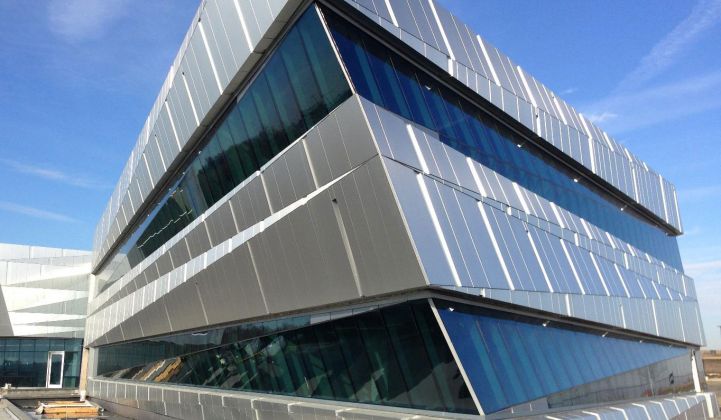View continues to be on a funding streak in 2015, with a new filing to bring in another $75 million. One year ago, the smart window startup raised $100 million.
The Milpitas, Calif.-based startup has raised $375 million since its inception as Soladigm seven years ago. Nearly $29 million of the current round has already been sold, according to an SEC filing.
View’s dynamic glass, which uses electrochromic technology, changes through four different tints to save energy and improve use of light in commercial buildings. The windows are coated with metal oxides, which activate the tint when charged with a small amount of voltage. By reducing the heat and glare that’s allowed into a building, the company says it can cut HVAC and lighting consumption by up to 20 percent and HVAC peak load by 25 percent.
Last June, the company announced it had shipped product to more than 100 projects around North America, a considerable jump from a figure of 50 projects at the start of 2014. Customers include NASA, SAP, W Hotels and Southern Methodist University.
View’s major competitor, SageGlass, owned by Saint-Gobain, has been shipping dynamic glass for more than a decade and counts various universities, government buildings and healthcare facilities as clients.
View’s investors over the years have included Madrone Capital Partners (a private equity firm with ties to Wal-Mart), glass giant Corning, Khosla Ventures, General Electric, Reinet Investments, NanoDimension, DBL Investors, Navitas Capital, Sigma Partners and The Westly Group.
View has raised considerable sums of money and landed some big-name clients and big-name investors, but smart glass continues to be a small market because an electrochromic window still costs about twice as much as a traditional double-paned window.
The wide acceptance of dynamic windows will likely begin with those markets that are willing to pay a premium for higher performance, and more will follow if the windows stand up to the test of time. The glass could also offer a faster payback in markets where window-clad commercial space is charged a premium for energy when demand is highest. The investment in smart glass, however, will have to be weighed against other technologies that are seeing price reductions, such as energy storage.
Even so, IDTechEx estimates the global smart windows market will be $700 million nearly a decade from now, in 2024. That’s lower than the nearly $900 million Navigant anticipates in 2022. NanoMarkets estimates that of the different technologies available, electrochromic glass will do the best in the smart windows market.



